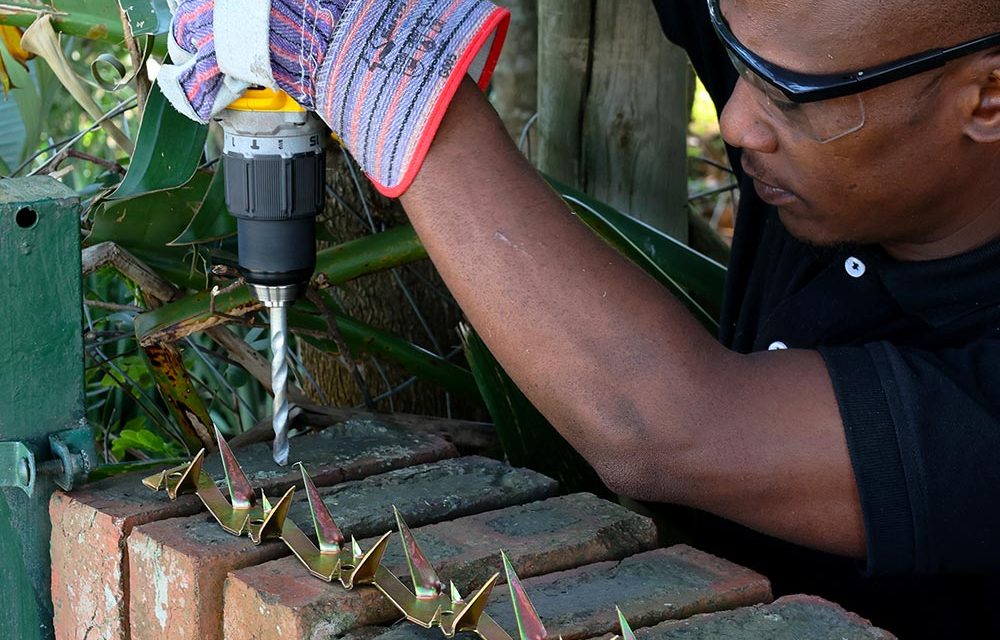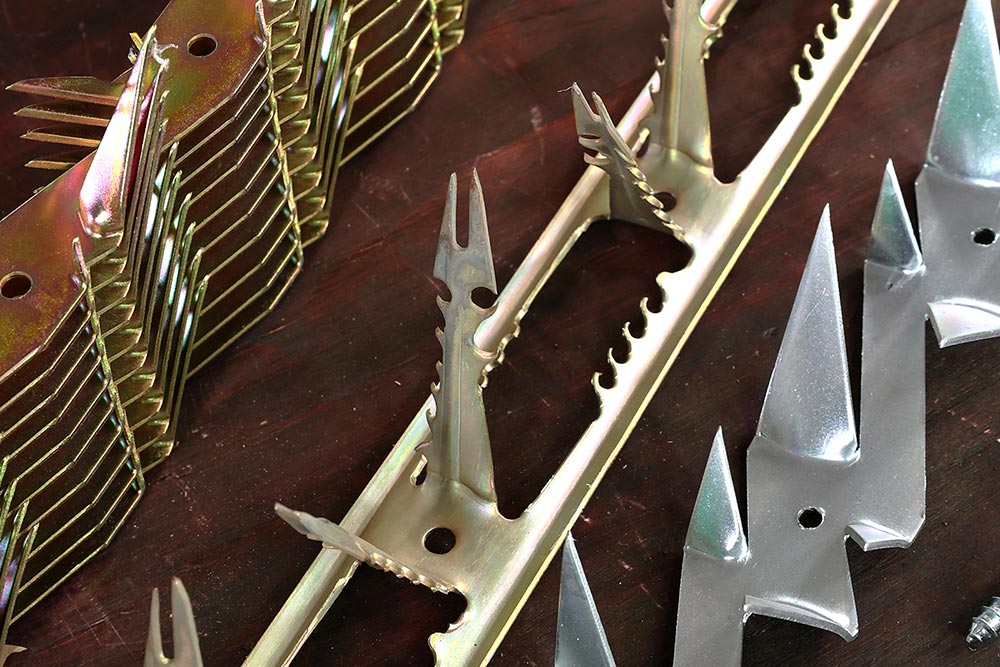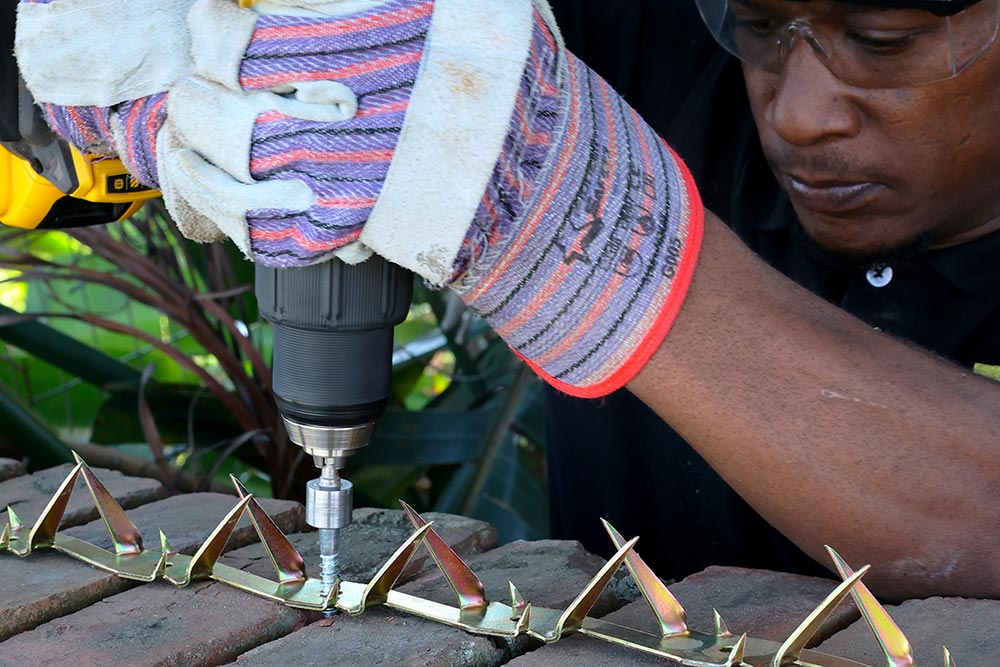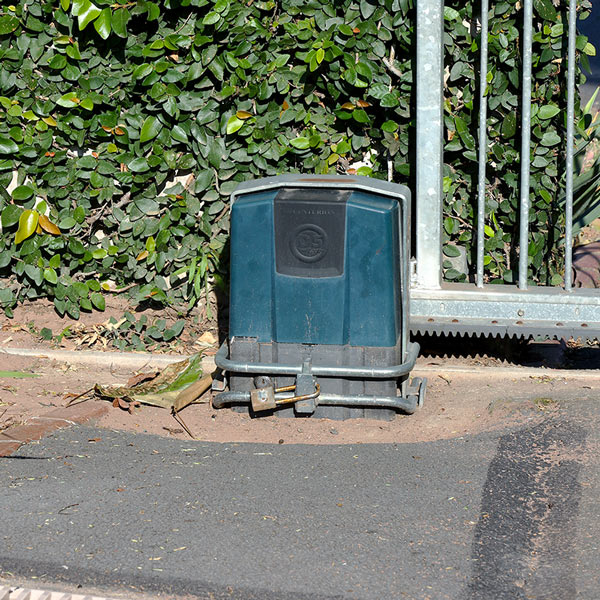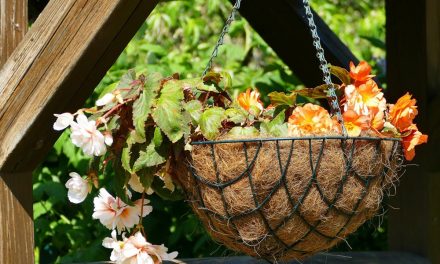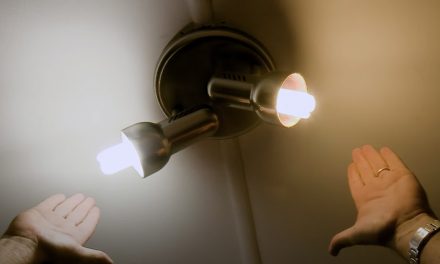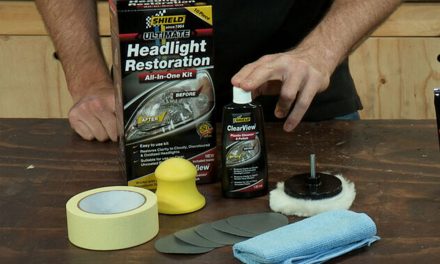Security is a priority for all of us and it starts at the perimeter of your property. Here’s how to beef up that boundary.
If you don’t have any fence at all around your property, this is the first place to start – and one of the easiest and most affordable options out there is a simple wire fence. An added benefit is that it won’t block your view! All you’ll need is fencing wire, fence posts (either cemented-in gum poles or steel fence droppers) and your choice of fencing material, like welded mesh or diamond mesh.
If you have a fence, you can upgrade its security by adding razor wire to the top edges. However, handling razor wire requires caution, so be sure to wear thick leather gloves for safety. Concertina razor wire can also be used to fortify a wall. It comes in a ball and can be unrolled and attached to the top of the wall, where it will create an extra barrier.
For installation, you’ll need a tape measure and pencil, a ladder, a drill with a masonry bit, a spanner, wall plugs with coach screws, wall spikes, an angle grinder and PPE – eye protection and leather gloves.
Installation is straightforward: position the spikes, mark and then drill holes and fasten them securely in place, using wall plugs and coach screws.
For non-automated gates, invest in a high-quality lock. These locks come in various shapes and sizes, so there will be one suitable for your gate type. Some good options are the 50 mm waterproof padlock from Anvilock, which is designed for outdoor use, or the Excell Master Lock, which has a boron-carbide shackle for better bolt cutter resistance, a stainless-steel body and a covered keyway for weather protection. Look for features like these, as well as key-retaining safeguards. This ensures that the key can’t be removed unless the lock is locked. In this way, you cannot leave it unlocked by mistake.
Remember, there’s no such thing as too many security layers when it comes to protecting your home. These DIY measures can help deter unwanted intruders and provide peace of mind for you and your family. All of these security items are available from Builders, as are many others.

